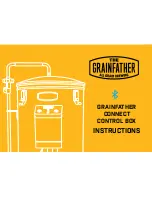
English
11
•
Immediately after the cooling operation stops
and if the room temperature and humidity are
low.
This is because warm refrigerant gas flows back
into the indoor unit and generates steam.
Outdoor unit
•
When the system is changed over to heating
operation after defrost operation.
Moisture generated by defrost becomes steam
and is exhausted.
9-8 NOISE OF AIR CONDITIONERS
Indoor unit
•
A “zeen” sound is heard immediately after the
power supply is turned on.
The electronic expansion valve inside an indoor
unit starts working and makes the noise. Its vol-
ume will reduce in about one minute.
•
A continuous low “shah” sound is heard when
the system is in cooling operation or at a stop.
When the drain pump (optional accessories) is in
operation, this noise is heard.
•
A “pishi-pishi” squeaking sound is heard when
the system stops after heating operation.
Expansion and contraction of plastic parts caused
by temperature change make this noise.
•
A low “sah”, “choro-choro” sound is heard
while the indoor unit is stopped.
When the other indoor unit is in operation, this
noise is heard. In order to prevent oil and refriger-
ant from remaining in the system, a small amount
of refrigerant is kept flowing.
Outdoor unit
•
When the tone of operating noise changes.
This noise is caused by the change of frequency.
Indoor unit, outdoor unit
•
A continuous low hissing sound is heard
when the system is in cooling or defrost oper-
ation.
This is the sound of refrigerant gas flowing
through both indoor and outdoor units.
•
A hissing sound which is heard at the start or
immediately after stopping operation or
defrost operation.
This is the noise of refrigerant caused by flow stop
or flow change.
9-9 DUST COMES OUT OF THE UNIT
•
When the unit is used after stopping for a long
time.
This is because dust has gotten into the unit.
9-10 THE UNITS CAN GIVE OFF ODOURS
•
During operation.
The unit can absorb the smell of rooms, furniture,
cigarettes, etc., and then emit it again.
9-11 THE OUTDOOR UNIT FAN DOES NOT
SPIN
•
During operation.
The speed of the fan is controlled in order to opti-
mize product operation.
9-12 THE DISPLAY SHOWS
“
”
•
This is the case immediately after the main
power supply switch is turned on.
This means that the remote controller is in normal
condition. This continues for one minute.
9-13 THE COMPRESSOR OR FAN IN THE
OUTDOOR UNIT DOES NOT STOP
•
This is to prevent oil and refrigerant from
remaining in the compressor. The unit will
stop after 5 to 10 minutes.
9-14 THE INSIDE OF AN OUTDOOR UNIT IS
WARM EVEN WHEN THE UNIT HAS
STOPPED
•
This is because the crankcase heater is warm-
ing the compressor so that the compressor
can start smoothly.
9-15 HOT AIR IS EMITTED EVEN THOUGH
THE UNIT IS STOPPED
•
Hot air can be felt when the unit is stopped.
Several different indoor units are being run on the
same system, so if another unit is running, some
refrigerant will still flow through the unit.
9-16 DOES NOT COOL VERY WELL
•
Program dry operation.
Program dry operation is designed to lower the
room temperature as little as possible.
Refer to page 6.
01_EN_3P201178-2B.fm Page 11 Wednesday, April 25, 2007 3:51 PM
Содержание VRV III REYQ10PY1B
Страница 3: ...2 1 4 3 5 6 7 1 7 3 7 2 ...
Страница 19: ...3P201178 2B EM07A012 0705 HT ...





































